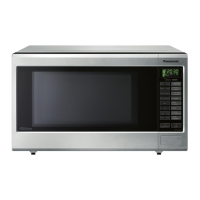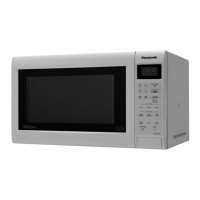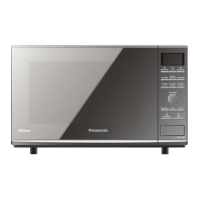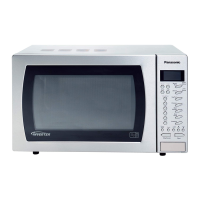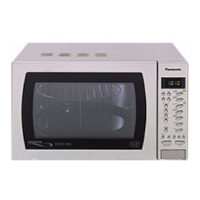Operation (continued)
51
Cooking Techniques (continued)
Shielding
Thin areas of meat and poultry cook more quickly than meaty
portions. To prevent overcooking, these thin areas can be shielded
with strips of aluminum foil. Wooden toothpicks may be used to
hold the foil in place.
CAUTION is to be exercised when using foil. Arcing can occur if
foil is too close to oven wall or door and damage to your oven will
result.
Cooking Time
Cooking times will vary because of food shape variations, starting
temperature, and regional preferences. Always cook food for the
minimum cooking time given in a recipe and check for doneness. If
the food is undercooked, continue cooking. It is easier to add time
to an undercooked product. Once the food is overcooked, nothing
can be done.
Stirring
Stirring is usually necessary during microwave cooking. Always
bring the cooked outside edges toward the center and the less
cooked center portions toward the outside of the dish.
Rearranging
Rearrange small items such as chicken pieces, shrimp, hamburger
patties or pork chops. Rearrange pieces from the edge to the center
and pieces from the center to the edge of the dish.
Turning
It is not possible to stir some foods to distribute the heat evenly.
At times, microwave energy will concentrate in one area of the
food. To help ensure even cooking, these foods need to be turned.
Turn over large foods, such as roasts or turkeys, halfway through
cooking.
Standing Time
Most foods will continue to cook by conduction after the
microwave oven is turned off. After cooking meat, the internal
temperature will rise 3 °C to 8 °C (5 °F to 15 °F), if allowed to stand,
tented with foil, for 10 to 15 minutes. Casseroles and vegetables
need a shorter amount of standing time, but this standing time
is necessary to allow foods to complete cooking to the center
without overcooking on the edges.
Test for Doneness
The same tests for doneness used in conventional cooking may
be used for microwave cooking. Meat is done when fork-tender or
splits at fibers. Chicken is done when juices are clear yellow and
drumstick moves freely. Fish is done when it flakes and is opaque.
Cake is done when a toothpick or cake tester is inserted and comes
out clean.
Check foods to see that they are cooked according to the United
States Department of Agriculture’s recommended temperatures.
To test for doneness, insert a meat thermometer in a thick or dense
area away from fat or bone. NEVER leave the thermometer in the
food during cooking, unless it is approved for oven use.
Cook all food to these minimum internal temperatures as
measured with a food thermometer before removing food
from oven. For reasons of personal preference, you may
choose to cook food at higher temperatures.
Product
Minimum Internal
Temperature & Rest Time
Beef, Pork, Veal & Lamb
Steaks, chops, roasts
63 °C (145 °F) and allow to rest
for at least 3 minutes
Ground meats 71 °C (160 °F)
Ham, fresh or smoked
(uncooked)
63 °C (145 °F) and allow to rest
for at least 3 min.
Fully Cooked Ham
(to reheat)
Reheat cooked hams
packaged in USDA-inspected
plants to 60 °C (140 °F); all
others to 74 °C (165 °F).
All Poultry (breasts, whole
bird, legs, thighs, and wings,
ground poultry, and stuffing)
74 °C (165 °F)
Eggs 71 °C (160 °F)
Fish & Shellfish 63 °C (145 °F)
Leftovers 74 °C (165 °F)
Casseroles 74 °C (165 °F)
F0003CM50CP_Eng_审查.indd 51 2023/3/30 12:47:53

